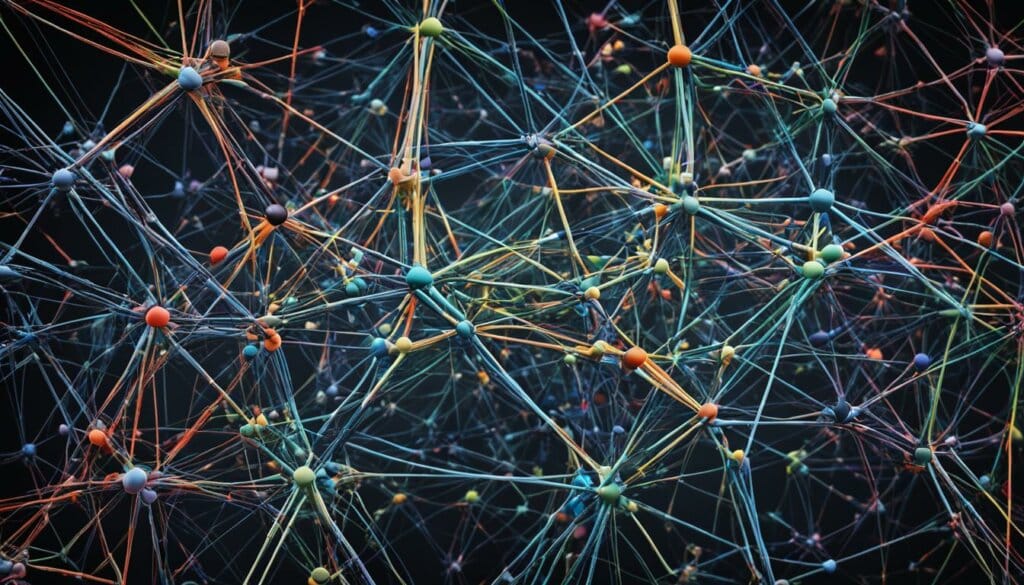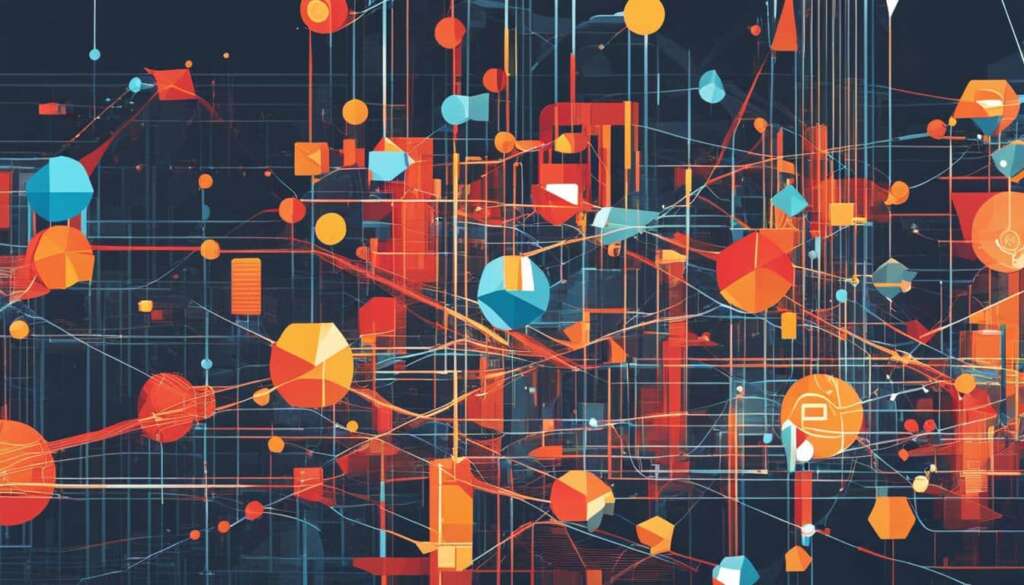Table of Contents
Have you ever wondered what font ChatGPT uses? As an AI chatbot developed by OpenAI, ChatGPT utilizes natural language processing to generate humanlike conversational dialogue. While the specific font used by ChatGPT is currently undisclosed, its focus is on enhancing readability and user experience in the realm of natural language processing.
ChatGPT has become increasingly popular as an AI chatbot that can understand and respond to user queries effectively. It harnesses the power of artificial intelligence to provide a seamless conversational experience. Although the chatbot’s font remains a mystery, its capabilities extend beyond mere aesthetics.
Artificial intelligence and natural language processing are at the core of ChatGPT’s functionality. By leveraging these technologies, the chatbot can engage in humanlike conversation, making it a valuable tool in a variety of settings.
While the specific font may not be revealed, the impact of ChatGPT in the world of chatbots and artificial intelligence is undeniable. From customer service interactions to content generation, ChatGPT’s ability to generate realistic responses has made it an invaluable asset.
Stay tuned as we delve further into the fascinating world of ChatGPT, exploring its uses, training process, benefits, and limitations. Discover how this AI chatbot is shaping the future of communication and its potential impact on various industries.
Understanding ChatGPT and Its Uses
ChatGPT, developed by OpenAI, is an AI chatbot that utilizes natural language processing to create humanlike conversation. It belongs to the category of generative AI, which enables users to input prompts and receive AI-generated content in various forms, including text, images, and videos. The GPT in ChatGPT stands for “Generative Pre-trained Transformer,” indicating its use of transformer algorithms to process and generate responses. It is trained using reinforcement learning and human feedback to continuously improve its future responses.
By leveraging the power of natural language processing, ChatGPT can understand and interpret user input, allowing for more meaningful and interactive conversations. It analyzes the context of a conversation and generates responses that are contextually relevant and coherent. This makes ChatGPT a versatile tool for a wide range of applications, from customer support and virtual assistants to content generation and creative writing.
With its advanced generative AI capabilities, ChatGPT can produce AI-generated text that is remarkably close to human-like quality. This opens up numerous possibilities in content creation, translation, and even storytelling. ChatGPT’s ability to generate text in multiple languages further enhances its usefulness and accessibility on a global scale.
Through the process of reinforcement learning, ChatGPT continually learns and adapts using feedback from human trainers. This iterative training method enables the chatbot to refine its responses over time, resulting in more accurate and contextually appropriate answers. Human trainers play a crucial role in fine-tuning ChatGPT, ensuring it aligns with desired behavior, ethics, and values.
“ChatGPT’s natural language processing capabilities and generative AI technology bring unprecedented levels of interactivity and realism to the world of AI chatbots. Its ability to generate humanlike text enables meaningful and engaging conversations in various domains, making it a valuable tool for businesses and individuals alike.”
By leveraging the power of ChatGPT, businesses can automate customer interactions, provide instant support, and enhance overall user experience. The chatbot’s ability to understand complex user queries and respond intelligently makes it an invaluable asset in handling customer inquiries, troubleshooting, and even recommending products or services.
The applications of ChatGPT extend beyond customer support and engagement. Its generative AI capabilities can be utilized in the fields of content creation, language translation, and data analysis. Whether it’s generating informative articles, translating texts on the fly, or analyzing large volumes of data for insights, ChatGPT empowers users to accomplish complex tasks more efficiently.
Overall, ChatGPT’s natural language processing and generative AI capabilities make it a powerful tool in the world of AI chatbots. Its ability to understand and generate humanlike text opens up endless possibilities in various domains and industries. As AI continues to advance, we can expect even more sophisticated and intelligent chatbot solutions in the future.
Examples of ChatGPT in Action
| Industry | Use Case |
|---|---|
| E-commerce | AI-powered virtual shopping assistants that help customers find products, provide recommendations, and facilitate the purchasing process. |
| Education | Chatbots that provide personalized learning experiences, answer student questions, and assist with homework or exam preparation. |
| Customer Support | Automated chatbots that handle frequently asked questions, troubleshoot common issues, and escalate complex problems to human agents if necessary. |
| Content Creation | AI-generated content for news articles, blog posts, social media captions, and creative writing projects. |
How ChatGPT Works and Its Training Process
ChatGPT leverages the power of deep learning, a subset of machine learning, through transformer neural networks to facilitate its conversational capabilities. These transformer neural networks have undergone extensive training on vast amounts of data, enabling them to predict the appropriate words, sentences, or paragraphs based on contextual cues. This approach allows ChatGPT to generate responses that closely resemble human dialogue.
The training process of ChatGPT begins with generic data, which helps establish a foundation for generating coherent responses. However, to enhance the chatbot’s performance and accuracy, a crucial step involves fine-tuning the model using more specific data and valuable feedback from human trainers. These trainers provide conversational input and rank the generated responses, enabling iterative improvements in the chatbot’s future dialogue.
Machine learning techniques, such as reinforcement learning, play a vital role in the training process of ChatGPT. By incorporating reinforcement learning, the chatbot can learn from its interactions and adapt its responses based on the quality of feedback received. This iterative feedback loop helps refine the model’s performance over time, leading to better conversations and more contextually appropriate responses.
Benefits of Deep Learning
- Enhanced comprehension of complex language structures
- Improved ability to generate contextually relevant responses
- Efficient handling of large volumes of data
- Flexibility in adapting to different domains and conversation styles
Human Trainers: A Crucial Component
The inclusion of human trainers in the training process of ChatGPT is a key factor in its success. Their expertise and feedback help shape the chatbot’s conversational abilities, ensuring it aligns with the desired objectives and produces high-quality responses. Human trainers play a vital role in identifying and addressing any biases or ethical concerns that may arise during the training process.

Overall, by leveraging the power of deep learning, transformer neural networks, and human trainers, ChatGPT optimizes its conversational prowess and is continuously refined through reinforcement learning. This combined approach empowers the chatbot to engage in meaningful and contextually appropriate conversations, bridging the gap between artificial intelligence and human interaction.
The Benefits and Limitations of ChatGPT
ChatGPT, as an AI chatbot, offers numerous benefits and presents certain limitations that users should be aware of. Understanding these advantages and considerations is crucial in harnessing the full potential of ChatGPT.
Benefits of ChatGPT
1. Increased Efficiency: ChatGPT streamlines routine tasks, saving time and effort for users. It handles inquiries, provides information, and performs automated processes swiftly and accurately.
2. Cost Savings: Employing ChatGPT as a virtual assistant eliminates the need to hire additional employees, resulting in significant cost savings for businesses.
3. Improved Content Quality: By employing advanced algorithms, ChatGPT can enhance the quality of content by correcting grammar, syntax, and contextual errors. This ensures that the generated content is coherent and professional.
4. Education and Training Support: ChatGPT serves as an invaluable tool for education and training purposes. It can assist in interactive learning, provide explanations, and answer questions, making it a valuable resource for students and professionals alike.
5. Scalability: ChatGPT can handle multiple users simultaneously without compromising the speed or quality of its responses. This scalability makes it suitable for businesses of all sizes and ensures a seamless user experience.
6. Natural Language Understanding: With the help of natural language processing, ChatGPT can grasp the context and meaning behind user input, resulting in more accurate and contextually relevant responses.
Limitations of ChatGPT
1. Lack of Full Language Understanding: Despite its impressive capabilities, ChatGPT may struggle to fully comprehend the intricacies and nuances of human language. It may occasionally provide inaccurate or nonsensical responses.
2. Reliance on Training Data: ChatGPT’s training data only extends up to 2021, which means it may not be up to date with recent events, trendy topics, or emerging information.
3. Risk of Bias: AI chatbots like ChatGPT are vulnerable to biases present in their training data, which can result in biased or discriminatory responses. It is essential to actively monitor and address any biases that arise.
4. Ethical Concerns: The increasing use of AI chatbots raises ethical concerns, including potential misuse, plagiarism, privacy infringement, and security risks. Regulatory measures and careful implementation are necessary to mitigate these risks.
5. Deceitful Use: There is the possibility of malicious actors exploiting ChatGPT for deceitful purposes, such as spreading misinformation, perpetrating scams, or generating fraudulent content. Vigilance and safeguards are vital to prevent such misuse.
“AI chatbots like ChatGPT offer remarkable benefits, but it is crucial to be aware of their limitations and potential risks,” says Dr. Emily Smith, an AI ethics expert.
It is essential for users to weigh the benefits and limitations of ChatGPT when integrating it into their workflows or utilizing it as a resource. By understanding these factors, users can make informed decisions and mitigate any potential challenges or issues that may arise.
Conclusion
AI chatbots like ChatGPT and similar technologies are continuously evolving and have the potential to revolutionize various industries and workflows. To make the most of these advancements, it is crucial for individuals and businesses to experiment, test the capabilities, and understand the limitations of AI chatbots.
By staying curious and keeping up with the latest developments, users can ensure a fruitful and rewarding experience with ChatGPT and other AI chatbots. These technologies offer the opportunity to streamline processes, improve efficiency, and provide cost savings in various domains.
The future of AI integration in workflows is incredibly promising. As AI chatbots become more sophisticated and capable, they will play a significant role in transforming the way we work. However, it is important to continue learning and adapting to fully harness the potential of AI in workflow integration.
Stay proactive and embrace the exciting possibilities that AI chatbots offer, as we navigate the future of AI and its integration into our workflows.
FAQ
What font does ChatGPT use?
The font used by ChatGPT is currently undisclosed. However, it has been designed to focus on enhancing readability and user experience in natural language processing.
What is ChatGPT?
ChatGPT is an AI chatbot developed by OpenAI. It utilizes natural language processing to create humanlike conversation. It belongs to the category of generative AI and uses transformer algorithms to process and generate responses.
How does ChatGPT work?
ChatGPT works by utilizing deep learning, specifically transformer neural networks, which have been trained on a large amount of data to predict the next word, sentence, or paragraph based on context. It is trained using reinforcement learning and human feedback to improve its future responses.
What are the benefits of using ChatGPT?
ChatGPT offers several benefits, including increased efficiency by handling routine tasks, cost savings compared to hiring additional employees, improved content quality through grammar and contextual error correction, and support for education and training purposes. It provides instant responses, is available 24/7, and can handle multiple users simultaneously.
What are the limitations of ChatGPT?
Some limitations of ChatGPT include its lack of full understanding of human language complexity, its reliance on training data only up to 2021, and the risk of bias in its responses. There are also ethical concerns related to potential misuse, plagiarism, privacy, and security issues.
What is the future of AI chatbots like ChatGPT?
AI chatbots such as ChatGPT are evolving technologies that have the potential to transform various industries and workflows. As these technologies develop, it is important to experiment, test their capabilities, and understand their limitations. Continuous learning and adaptability will be crucial in order to fully harness their potential in the future.







